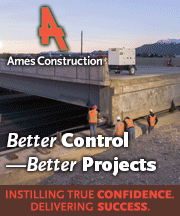
An Open Letter to Secretary Anthony Foxx
Secretary Anthony Foxx
U.S. Department of Transportation
1200 New Jersey Ave. SE
Washington, D.C. 20590
Dear Secretary Foxx,
Congratulations on your unanimous confirmation to serve as U.S. Secretary of Transportation. As head of one of the nation’s most important agencies, you now have the unique opportunity to lead it into the future. This future may involve the next generation of aircraft or navigation; roads or bridges; cars or trains. But one innovation, design-build project delivery, has already arrived. While many states (including your home state of North Carolina) use it extensively, the U.S. Department of Transportation is often behind the times.
Design-build is an integrated approach that delivers design and construction services under one contract with a single point of responsibility. A study by the Construction Industry Institute and Penn State University showed that design-build offers equal or higher quality than other commonly used delivery methods. You would never fly in a plane that was designed by Boeing, but built by Lockheed Martin. So why do we drive on bridges designed and constructed by two different companies who barely communicate during a project?
Research from the University of Florida’s College of Engineering shows that transportation projects delivered through design-build have an average project completion rate that is 36% faster and 11% cheaper. Numerous transportation agencies successfully utilize design-build for the construction and repair of roads, bridges, rails and airports. Transportation is also the fastest growing design-build sector in the United States, with transportation design-build projects doubling in the past five years; both in quantity and value of projects.
In fact, your home state of North Carolina uses design-build for transportation projects very effectively. Over the course of 2013 the dollar volume of design-build projects done by the North Carolina Department of Transportation will total $4.7 billion. These projects include the widening of interstates, bridge construction, highway rehabilitations, and light rail development. It’s also important to note that 94% of winning design-build bidders in North Carolina had the highest or second highest technical score, and cost overruns averaged less than 2%.
Notable design-build transportation projects in the United States include:
- The replacement for Minnesota’s I-35W bridge that collapsed in 2007, which was completed in under a year and opened three months ahead of schedule;
- The Colorado Transportation Expansion (T-Rex) project that was completed nearly two years early and $50 million under budget; and
- The Mineta San Jose Airport outside of Silicon Valley that was completed a full year earlier than it would have been using the traditional design-bid-build delivery method, and was finished so far under budget that $50 million was returned to the city upon completion.
The Department of Transportation would not be the first federal agency to embrace design-build. Key federal agencies such as the Army Corps of Engineers, Navy Facilities Engineering Command, and the Bureau of Prisons use design-build in more than 75% of their projects. In August 2011, President Obama issued a Presidential Memorandum directing departments and agencies to identify infrastructure projects that can be expedited. The memorandum specifically noted the Federal Highway Administration’s efforts to promote design-build as a way to shorten project delivery. “FHWA teams focus on facilitating interagency coordination,” the White House noted. “On the construction side, the agency is encouraging State use of acceleration techniques like design-build.”
By vocally supporting design-build in transportation you can lead this nation into a future where transportation projects are finished early, not late; cost savings are regular, not rare; and oversight is simple, not complicated. You can make expedited project completion a high priority at the Department of Transportation, which would encourage the use of design-build for projects. You can also push Congress to re-authorize the use of design-build on new projects when MAP-21 is renewed next year.
Please do not hesitate to contact DBIA if you have any questions about design-build, best practices, or ways to advocate for greater use of this innovative, growing delivery method.
Sincerely,
Lisa Washington, CAE
DBIA Executive Director/CEO






